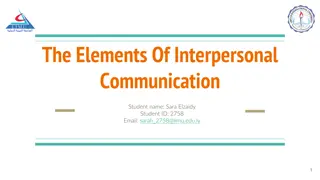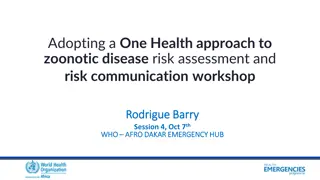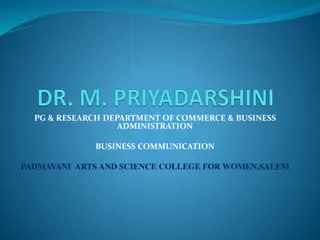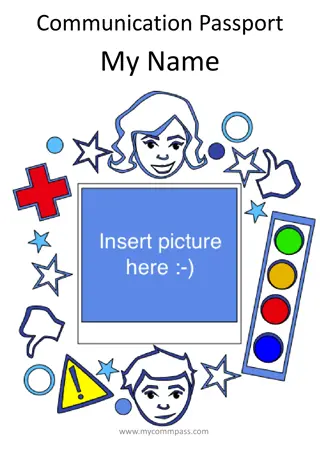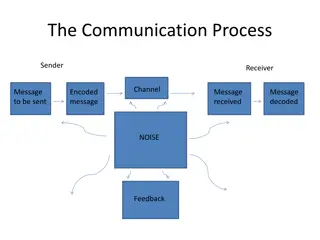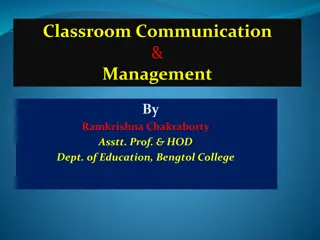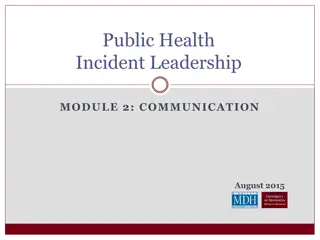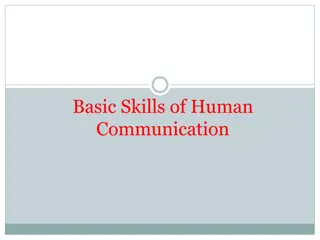Comprehensive Guide on Effective Communication Skills
Enhance your communication skills by learning the importance of effective communication in various aspects of life. Discover practical tips and techniques to improve your verbal, non-verbal, and written communication skills.
Download Presentation

Please find below an Image/Link to download the presentation.
The content on the website is provided AS IS for your information and personal use only. It may not be sold, licensed, or shared on other websites without obtaining consent from the author. Download presentation by click this link. If you encounter any issues during the download, it is possible that the publisher has removed the file from their server.
E N D






